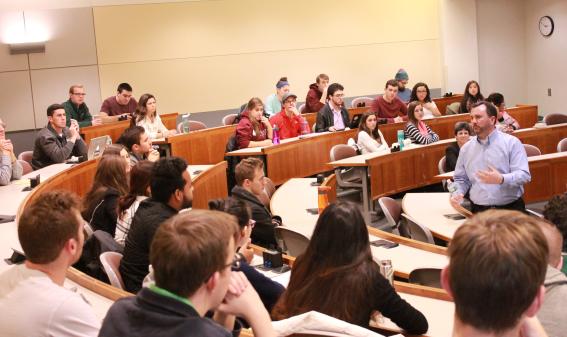Operations Management Grad Excels as Organization Change Agent
December 14, 2015

In recent years, the 120-year-old Dutch-based conglomerate has reinvented of itself, casting off its low-margin commoditized manufacturing of semiconductors, TVs, and its audio and video operations. In 2013, it dropped “Electronics” from its name, which is now Royal Philips N.V.
Today, Philips has 11 businesses in three broad categories: health systems, personal health (consumer lifestyle), and high-end lighting. Its health systems offerings include imaging systems, defibrillators, diagnostic monitoring solutions, anesthesia systems, and software that integrates different medical devices. On the personal health front, the company makes air purifiers, shavers, electric toothbrushes, medical alert systems, and many other products.
A Change Agent’s Challenges
For Chludzinski, fostering product quality and its continuous improvement across the company’s product lines has been an obsession. The company is progressing on a number of fronts, he told the students. “Many of our systems were too complex, and we needed to identify and implement more effective quality metrics and quality check points,” he emphasized.
But above all, he said, cultural change was in order to create a “safe” climate where employees could comfortably identify problems with products and systems and propose solutions. “Our research revealed that line workers by and large shared open communication with one another, but many of the company’s senior leaders did not.
Quarterly pressures aside, “we needed to slow people down to solve the problems at hand,” he told the students. To that end, the company has introduced a team-based daily management process with a focus on key performance metrics and problem solving that addresses a broad brush of activities. “We want to address problems when they are small and manageable and not wait for them to get out of hand.”
Operations Management Roots
After graduating with a degree in Operations Management from Isenberg, Mike helped improve productivity in plastics factories in the Berkshires and was a Technical Quality Leader for 2 years at GE Plastics (now SABIC) in Pittsfield, before earning an MBA from the University of Michigan. From 1998 through 2001, he was a consultant/problem solver with Deloitte Consulting, on behalf of a variety of clients.
Mike credits his first exposure to the interaction of systems, people, and company culture to his Isenberg education. “Back then, that perspective was a differentiator for the operations management program,” he remarked. “Professors Robinson, Agha, Shmerling, and others have helped shape my work as a practitioner. Cultural change has to be a way of business life. All those technology tools are great, but if you can’t work with people, you’re sunk.”